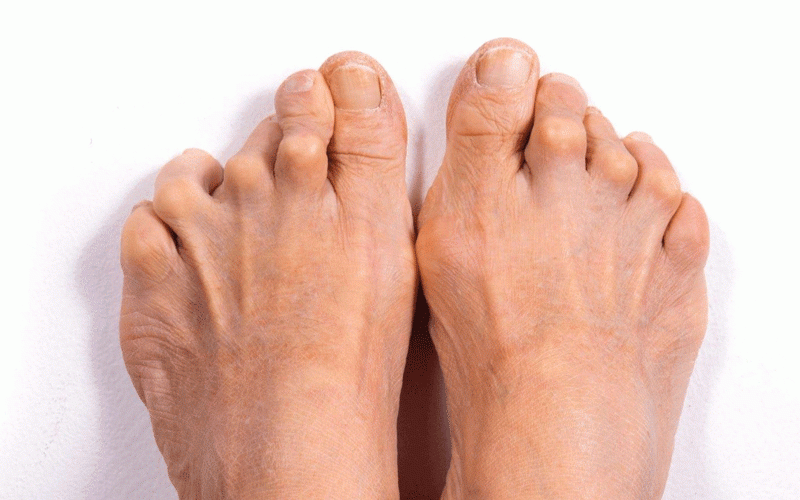
In this installment I want to take you through one of the most common conditions among us.
So many beliefs, myths and misunderstandings have been associated with arthritis, a condition that has impact on individuals, families, employers and the nation at large.
There are many types of arthritis, but global estimates say that 9,6% of men and 18% of women aged over 60 years have symptomatic osteoarthritis.
It is sad to note that about 80% of those with osteoarthritis will have limitations in movement and 25% cannot perform their major daily activities of life.
What is arthritis?
Arthritis is the swelling and tenderness of one or more of your joints. When joints are inflamed they can develop stiffness, warmth, swelling, redness and pain.
There are more than 100 types of arthritis, which include psoriatic arthritis, reactive arthritis, septic arthritis and juvenile idiopathic arthritis.
However, I would want to dwell on the most common types that we occasionally meet during our practice in Zimbabwe. These are:
Osteoarthritis
Here cartilage, which is the hard slippery tissue that covers the ends of bones where they form a joint, breaks down.
This is the commonest type affecting millions of people worldwide. Although osteoarthritis can damage any joint, the most affected joints are usually the knees, hips and spine.
Rheumatoid arthritis
This is an auto-immune disorder when your own immune system mistakenly attacks your own body’s tissues. The lining of your joints is affected, causing a painful swelling that can result in bone erosion and joint deformity.
Gout arthritis
This is where the accumulation of uric acid crystals in your body. The attack is usually sudden, with severe pain, swelling, redness and is quite common at the base of the big toe. Reduce red meats that are the source of purines that are broken to produce uric acid. Also reduce alcohol and drinks sweetened with fruit sugar (fructose).
Symptoms
The most common symptoms and signs involve the joints. These are pain, joint stiffness, swelling, redness and decreased range of motion.
Risk factors for arthritis
Family history: Some types of arthritis run in families and you may likely develop arthritis if your parents or siblings have the disorder.
Age: The risk of many types of arthritis including osteoarthritis, rheumatoid and gout increases with age.
Sex: Women are more likely to develop rheumatoid arthritis and osteoarthritis than men so be on the lookout for early symptoms.
Previous joint injury: Those who had traumatic injuries to their joints are more likely to develop arthritis in the respective joint.
Obesity: Having excess weight puts more stress on major joints that include knees, hips and spine, thus those with obesity stand at a higher risk of developing arthritis even later in life.
Diagnosis
While so many people seem to be accurate in diagnosing arthritis by themselves, it is imperative that proper tests be done. Diagnosis comes through:
Laboratory tests: Analysis of the different types of body fluids, which include blood, urine and joint fluid, is important. Common blood tests include Serum Uric Acid, Rheumatoid Factor, Anti-Nuclear Factor/Antigen, Calcium Levels. These are affordable tests, which are done by many laboratories.
Imaging: Imaging includes doing such things as:
Computerised tomography: Can visualise both bone and surrounding soft tissues.
Magnetic resonance imaging: Can provide more detailed cross-sectional images of soft tissues such as cartilage, tendons and ligaments.
Home remedies
While not all may afford to get the right medication because of financial constraints especially in Zimbabwe where the health delivery system is grounded because of the declared incapacitation and economic quagmire, some home remedies may be applied. These include:
Weight loss: If you are obese, losing weight will reduce stress on weight-bearing joints like knees, hips, spine.
Exercise: Regular exercises can keep your joints flexible. Swimming and water aerobics are good choices.
Heat and cold: Heating pads or ice packs may help relieve arthritic pain.
Assistive devices: Using canes, shoe inserts, walkers, raised toilet seats and other assistive devices can help protect your joints.
Avoid red meat: If you suspect gout arthritis, reduce or suspend red meat as it can worsen the arthritis.
Treatment
Treatment for arthritis focuses on relieving symptoms and improving joint function. One may end up trying several medications. The following can be used:
Non-steroidal anti-inflammatory drugs: Drugs like Ibuprofen, Diclofenac, Naproxen, Celecoxib, Mefenamic Acid, Aspirin can be used.
Corticosteroids: These drugs reduce inflammation and suppress the immune system. They include Prednisolone, Prednisone, Hydrocortisone, Depo-medrol (Methyl-prednisolone acetate) which is injected directly into the painful joint.
Disease-modifying anti-rheumatic drugs: These include methotrexate, chloroquine.
Painkillers: These reduce pain, but have no effect on inflammation. These include Paracetamol, Codeine, Tramadol, Morphine.
Advise your friend, spouse, parents to seek medical treatment. It is not witchcraft, but it is your age which is catching up with you.
- Dr Johannes Marisa is a private medical practitioner who can be accessed on doctormarisa@mail.com










